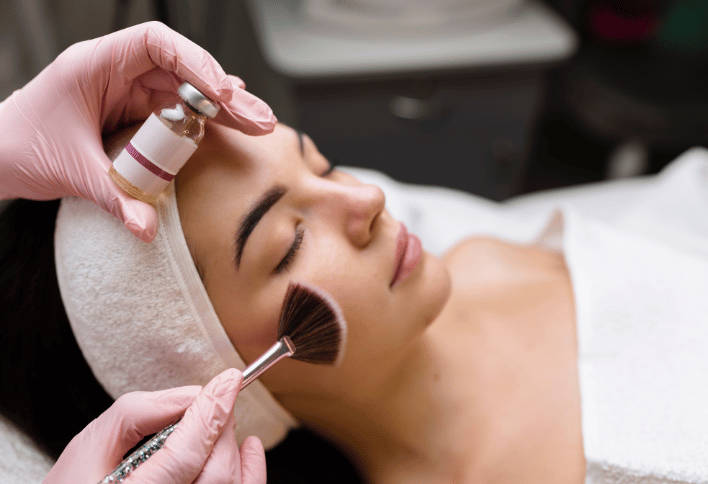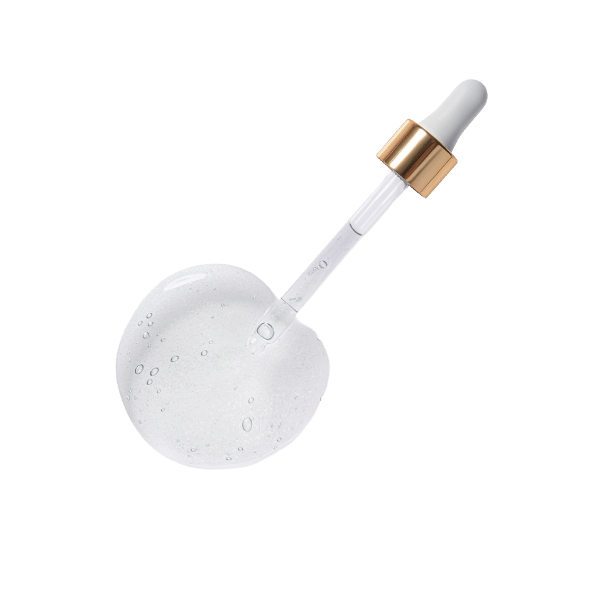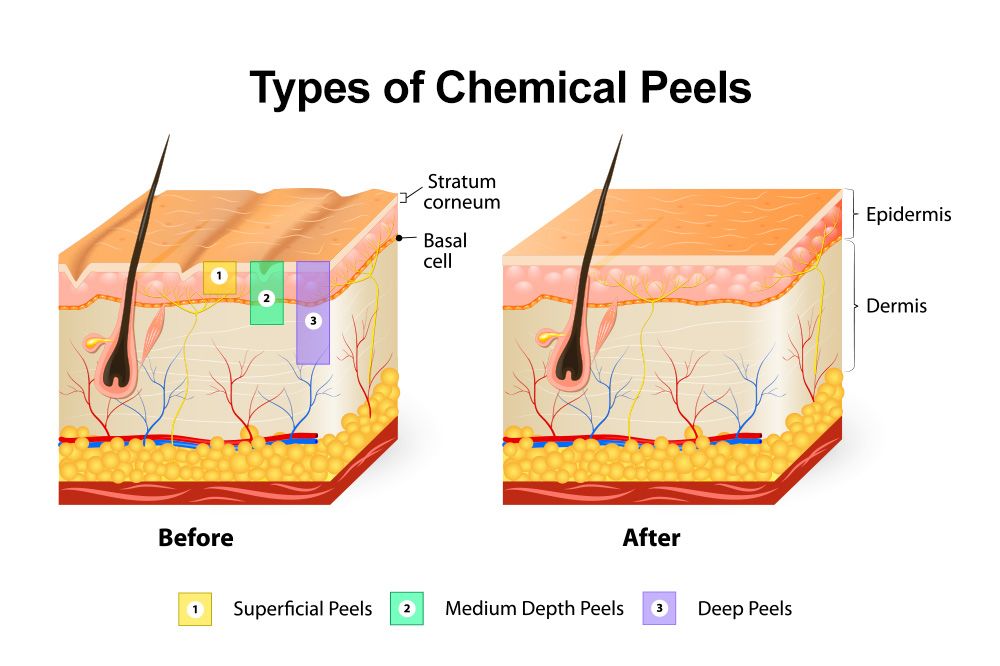Chemical Peel
The chemical solution that is used on your skin helps remove layers of damaged cells and reveal healthier skin that has a smooth texture. A chemical peel also stimulates cell turnover, giving you a younger, healthier complexion. After the treatment, your skin has a smooth texture.


FINE LINES + WRINKLES

ELASTICITY + FIRMNESS

EVEN TONE + VIBRANCY

SKIN TEXTURE

BROWN SPOTS

OILY + CONGESTED SKIN

ENLARGED PORES
What Is Chemical Peel?
Chemical peels can improve the skin’s appearance. In this treatment, a chemical solution is applied to the skin, which makes it “blister” and eventually peel off. The new skin is usually smoother and less wrinkled than the old skin.

How it works?
Generally speaking, there are three types of facial acid peels.
- Superficial or lunchtime peel: Alpha-hydroxy acid or another mild acid is used to penetrate only the outer layer of skin to gently exfoliate it. The treatment is used to improve the appearance of mild skin discoloration and rough skin as well as to refresh the face, neck, chest or hands.
- Medium peel: Glycolic or trichloroacetic acid is applied to penetrate the out and middle layers of skin to remove damaged skin cells. The treatment is used to improve age spots, fine lines and wrinkles, freckles and moderate skin discoloration. It also can be used to smooth rough skin and treat some precancerous skin growths, i.e. actinic keratosis.
- Deep peel: Trichloroacetic acid or phenol is applied to deeply penetrate the middle layer of skin to remove damaged skin cells. The treatment removes moderate lines, age spots, freckles and shallow scars. Patients will see a dramatic improvement in skin appearance. The procedure is used on the face and only can be performed once.


Benefits of Chemical Peel
Chemical peels can be done on the face, neck, or hands. They can be used to:
Reduce fine lines under the eyes and around the mouth
Treat wrinkles caused by sun damage and aging
Improve the appearance of mild scars
Treat certain types of acne
Reduce age spots, freckles, and dark patches (melasma) due to pregnancy or taking birth control pills
FAQ
Who Is a Good Candidate For a Chemical Peel?
Generally, fair-skinned and light-haired patients are better candidates for chemical peels. If you have darker skin, you may also have good results, depending upon the type of problem being treated. But you also may be more likely to have an uneven skin tone after the procedure.
When can I see the results?
The results of a chemical peel are usually obvious right away, even if your skin is flaking or red. You’ll notice that your skin has a smooth texture and fresh radiance. It may take some time for you to notice other changes, such as lightening of hyperpigmentation and softening of wrinkles and creases.
What can I expect after having a chemical peel?
All peels require some follow-up care:
- Superficial peels require one to seven days to heal. Treated skin will initially be red and may scale. Lotion or cream should be applied until the skin heals, followed by daily use of sunscreen. Makeup can usually be worn the next day.
- Medium peels require seven to 14 days to heal. Treated skin will initially be red and swollen. Swelling worsens for the first 48 hours. Eyelids may swell shut. Blisters may form and break. Skin crusts and peels off in seven to 14 days. Skin must be soaked daily for a specified period, followed by ointment application. Antiviral medication is taken for 10 to 14 days. Mild lotion or cream may be applied. Avoid all sun exposure until healing is complete. Camouflage makeup may be worn after five to seven days. A follow-up appointment will be necessary to monitor progress.
- Deep peels require 14 to 21 days to heal. The treated area will be bandaged. Skin must be soaked four to six times daily, followed by ointment application for the first 14 days. Afterwards a thick moisturizer is applied for the next 14 days. Antiviral medication is taken for 10 to 14 days. Mild lotion or cream may be applied. Avoid all sun exposure for three to six months. Camouflage makeup may be worn after 14 days. Several follow-up appointments will be necessary to monitor progress.
What are the possible complications?
Some skin types are more likely to develop a temporary or permanent color change in the skin after a chemical peel. Taking birth control pills, subsequent pregnancy, or a family history of brownish discoloration on the face may make that more likely.
There is a low risk of scarring in certain areas of the face. Some people may be more likely to scar. If scarring does happen, it can usually be treated with good results.
